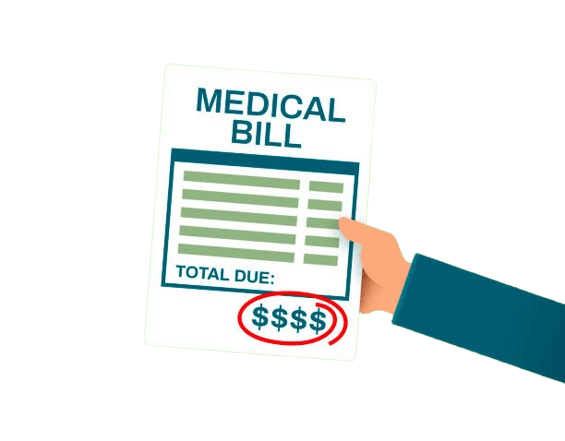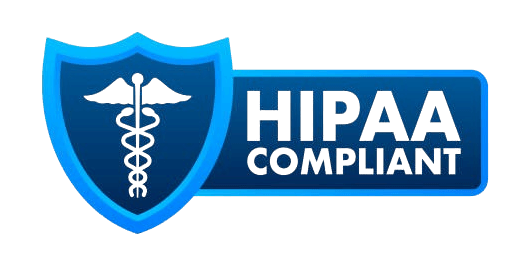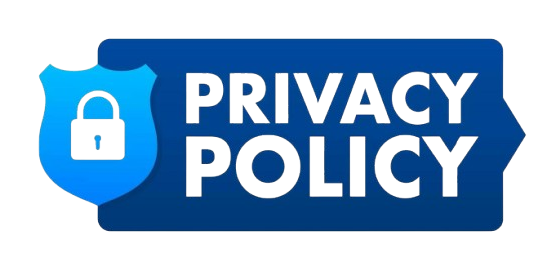Explanation of Benefits (EOB) in Medical Billing?

BLOG OUTLINE
- What is an EOB (EXPLANATION OF BENEFITS) in Medical Billing?
- Importance of EOBs in Medical Billing
- Components of an EOB
- How to Read and Interpret an EOB
- Common Terminologies in EOBs
- Differences between EOBs and Medical Invoices
- Tips for Handling EOBs Effectively
- EOBs and Insurance Claims Process
- EOBs in Healthcare Revenue Cycle Management
- Conclusion
- Explanation of Benefits (EOB) for Providers FAQs
What is an EOB (EXPLANATION OF BENEFITS) in Medical Billing?
When a healthcare provider submits a claim to an insurance company, the response they receive comes in the form of an Explanation of Benefits (EOB). But what exactly is an EOB in medical billing? An EOB is a document sent by insurance companies to both providers and patients, detailing how a claim was processed. It breaks down the amount billed, the amount covered by insurance, patient responsibility (such as copayments or deductibles), and any adjustments made. Understanding an EOB is crucial for both healthcare providers and patients to ensure transparency in billing, identify discrepancies, and manage financial responsibilities effectively. Continue reading to dive deeper into the role of EOBs, how to interpret them, and their importance in the medical billing process.
Importance of EOB in Medical Billing
Understanding the significance of Explanation of Benefits (EOBs) in the realm of medical billing is crucial for both patients and healthcare providers.
EOBs serve as a critical communication tool between insurance companies and policyholders, outlining what services were billed, what the insurance plan covered, and what the patient may owe. This document not only clarifies financial responsibilities but also provides transparency regarding the healthcare services rendered. For patients, it is an essential resource for understanding their healthcare expenses and navigating the often-complex billing process.
In addition to informing patients about their financial obligations, EOBs play a vital role in the overall healthcare billing ecosystem. They help healthcare providers track payments and claims, ensuring that they receive the appropriate reimbursement for services rendered. By detailing each charge and the insurance company’s adjustments, EOBs allow providers to manage their financial health effectively. Accurate understanding of EOBs can lead to better financial planning and less confusion for both patients and providers.
Furthermore, EOBs empower patients to engage in their healthcare decisions proactively. By clearly outlining what was covered, they enable patients to compare costs, understand their benefits, and make informed choices about future healthcare services. This transparency is not only beneficial for individual patients but also contributes to a more efficient healthcare system by reducing billing disputes and promoting clarity between all parties involved.

For Insurance Credentialing, Medical Billing Services and other services
Components of an EOB
An EOB typically consists of several key components that provide detailed information about the medical services rendered.
First and foremost, it includes the patient's information, such as their name, policy number, and the date of service. This section ensures that the EOB is correctly attributed to the right patient and can be easily referenced in case of discrepancies. Additionally, the provider's information, including the name and address of the healthcare facility or professional, is also included, helping to identify where the services were provided.
Another critical component of an EOB is the breakdown of the services billed. This section lists each procedure or service provided, along with the corresponding charges. Accompanying these charges are the amounts covered by the insurance plan, any discounts applied, and the total amount the patient is responsible for paying. This detailed breakdown allows patients and providers to see exactly how charges were calculated and what adjustments were made, fostering better understanding and accountability.
Lastly, EOBs often include information about the patient's deductible, copayment, and coinsurance amounts. These figures are essential for patients to understand their financial responsibilities. Knowing how much of the deductible has been met or how much is left can significantly impact a patient's decision-making regarding future healthcare services. This comprehensive overview of costs and coverage not only aids in financial planning but also ensures that patients are well-informed about their healthcare expenses.
How to Read and Interpret an EOB


Reading and interpreting an EOB can initially appear daunting, but breaking it down into manageable sections can simplify the process.
- Start by locating the basic patient and provider information at the top of the document. Confirm that all information is accurate, including your name, insurance policy number, and the date of service. This foundational step is crucial, as any discrepancies can lead to billing errors or complications in claims processing.
- Next, focus on the details of the services provided. Each line item will typically include the service description, the billed amount, the allowed amount by the insurance, and the amount covered. Pay close attention to any adjustments made by the insurance company. These adjustments can include discounts for in-network providers or services that are not covered under the policy. Understanding these figures is vital, as it directly influences what you owe out of pocket.
- Finally, examine the section that outlines your financial responsibility. This part will specify your deductible status, any copayments, and your coinsurance percentage. It is essential to verify these amounts against your insurance policy, as miscommunication can occur between healthcare providers and insurance companies. By comprehensively reviewing this information, you can ensure that you are being charged correctly and are aware of your financial obligations.
Common Terminologies in Explanation of Benefits
Navigating the language of EOBs can be challenging due to the use of specific terminologies that may not be familiar to everyone.
1. Allowed Amount
Some of the most common terms found in EOBs include “allowed amount,” which refers to the maximum amount an insurer will pay for a covered service. This term is crucial, as it determines the basis for how much of the billed amount will be reimbursed. Understanding this concept can help patients grasp why some services may result in higher out-of-pocket expenses than anticipated.
2. Deductible
Another essential term is “deductible,” which is the amount a policyholder must pay out of pocket before their insurance starts covering costs. The EOB will indicate how much of the deductible has been met and how much remains. This information is vital for patients to plan for future healthcare expenses, as it can impact their financial responsibilities significantly.
3. Coinsurance
“Coinsurance” is another critical term that often appears on EOBs. This refers to the percentage of costs that patients are responsible for after their deductible has been met. For example, if a plan has a 20% coinsurance rate, the patient will pay 20% of the allowed amount for a service, while the insurance covers the remaining 80%. Being familiar with these terms helps patients interpret their EOBs more accurately and empowers them to make informed financial decisions regarding their healthcare.
Differences between EOB and Medical Invoices
While both EOBs and medical invoices serve as important financial documents in the healthcare industry, they have distinct purposes and functions.
EOB VS MEDICAL INVOICE
An EOB that stands for Explanation Of Benefits is primarily issued by the insurance company, detailing the coverage and payment for services rendered. It serves as a summary of what the insurer has processed, what adjustments were made, and what the patient is responsible for covering. The focus of an EOB is to communicate how the insurance company has handled a claim related to specific medical services.
In contrast, a medical invoice is generated by healthcare providers and outlines the total charges for services provided, regardless of insurance coverage. It is essentially a bill that indicates the amount due from the patient after any insurance payments have been applied. Medical invoices may not provide the same level of detail regarding insurance adjustments as EOBs do, leading to potential confusion for patients trying to reconcile their payments.
Furthermore, EOBs are not bills but rather informational documents that help patients understand their insurance benefits and the payment process. Patients may receive an EOB before they receive an actual bill from their healthcare provider, which can sometimes lead to misunderstandings. By recognizing the differences between these two documents, patients can better navigate their financial responsibilities and ensure they are paying the correct amounts.
Tips for Handling EOBs Effectively
Effectively handling EOBs is essential for managing healthcare expenses and ensuring accurate billing.
- One of the first steps is to keep a well-organized file of all EOBs received, as this documentation can be critical for tracking payments and resolving discrepancies. Consider creating a dedicated folder, either physical or digital, to store EOBs in chronological order. This organization will make it easier to reference past claims and understand your healthcare spending over time.
- When reviewing each EOB, take the time to cross-reference the information against the medical services received. If there are any discrepancies or charges that seem incorrect, do not hesitate to reach out to the healthcare provider's billing department or the insurance company for clarification. Promptly addressing any issues can prevent future complications and ensure that you are not overpaying for services.
- Lastly, it is beneficial to familiarize yourself with your insurance policy and benefits. Understanding your coverage limits, deductibles, and out-of-pocket maximums can provide context when reviewing EOBs. This knowledge empowers you to anticipate potential costs and budget accordingly. By being proactive and informed, you can navigate the complexities of EOBs more effectively and take control of your healthcare finances.
EOB and Insurance Claims Process
EOBs are an integral part of the insurance claims process, serving as a bridge between healthcare providers and insurance payers. When a claim is submitted for services rendered, the insurance company reviews the documentation to determine coverage eligibility. Once the review is complete, the insurer issues an EOB, detailing the outcome of the claim, the amount billed, and the final payment decision. This process ensures that both the patient and the provider are informed of the claim’s status and the financial implications.
Moreover, EOBs can also play a role in appeals and disputes. If a claim is denied or if there are questions about the covered services, the EOB provides a clear record of the insurance company’s decisions. Patients can use this information to challenge denials or seek clarification on coverage issues. By understanding the claims process and utilizing EOBs effectively, patients can navigate their insurance benefits with greater confidence.
The EOB provides transparency in the claims process, allowing patients to understand how their insurance company processes each claim. It outlines any adjustments made, such as allowable charges and discounts, which can impact the final payment. For healthcare providers, EOBs serve as a reference for tracking payments and managing accounts receivable, ensuring that they receive timely reimbursement for services rendered.
EOBs in Healthcare Revenue Cycle Management
In the realm of healthcare revenue cycle management, EOBs are crucial for ensuring the financial health of medical practices and institutions.
- They help track the flow of revenue by providing detailed accounts of services rendered, payments received, and outstanding balances. By analyzing EOB data, healthcare providers can identify trends in billing, payment patterns, and potential areas for improvement in their collections processes.
- EOBs also play a significant role in identifying discrepancies between billed amounts and payments received. By closely reviewing EOBs, providers can pinpoint areas where claims may have been underpaid or denied, allowing them to take corrective action. This analysis is essential for improving the overall efficiency of the billing process and maximizing revenue collections, as it identifies opportunities for follow-up on unpaid claims or appeals on denied claims.
- Furthermore, integrating EOB data into broader revenue cycle management strategies can enhance financial planning and forecasting. Providers can use insights gained from EOB reviews to make informed decisions regarding staffing, resource allocation, and budgeting. By leveraging the information contained within EOBs, healthcare organizations can improve their financial performance and ensure sustainability in an increasingly complex healthcare landscape.
CONCLUSION
In conclusion, EOBs are more than just documents; they are essential tools for navigating the complex world of medical billing. By understanding their importance, components, and how to interpret them, patients and healthcare providers can foster clearer communication and better financial management. EOBs serve as a bridge between insurance companies and policyholders, providing transparency and clarity in the billing process.
Key takeaways include the recognition of the differences between EOBs and medical invoices, the significance of familiarizing oneself with common terminologies, and the importance of proactive management of EOBs. By keeping organized records, reviewing documents thoroughly, and understanding insurance policies, individuals can take control of their healthcare expenses and avoid misunderstandings.
Ultimately, EOBs empower patients to engage with their healthcare decisions actively. As healthcare continues to evolve, the role of EOBs in promoting transparency and accountability will remain vital, making it essential for everyone involved in the healthcare process to be informed and proactive in their approach.


